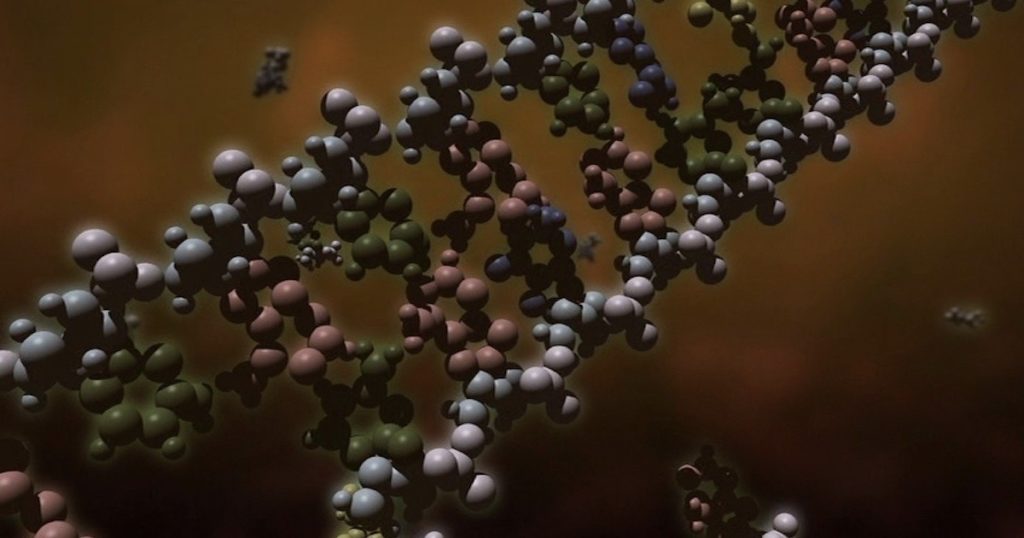 Evolution
Evolution
 Intelligent Design
Intelligent Design
Fact Check: Did University of Tokyo Researchers Explain the Origin of Life?

The University of Tokyo offers a press release lauding research by a team of their scientists that purportedly helps explain the origin of life. The lead investigators recently published their experimental results in Nature Communications in an article titled “Evolutionary transition from a single RNA replicator to a multiple replicator network.” They summarize the research as follows:
Researchers at the University of Tokyo have for the first time been able to create an RNA molecule that replicates, diversifies and develops complexity, following Darwinian evolution. This has provided the first empirical evidence that simple biological molecules can lead to the emergence of complex lifelike systems.
They then quote the lead investigators:
The team was truly excited by what it saw. “We found that the single RNA species evolved into a complex replication system: a replicator network comprising five types of RNAs with diverse interactions, supporting the plausibility of a long-envisioned evolutionary transition scenario,” said [Ryo] Mizuuchi.
The research paper itself avers, “These results support the capability of molecular replicators to spontaneously develop complexity through Darwinian evolution, a critical step for the emergence of life.”
If the scientists had accomplished such an astonishing feat, the team leads would almost certainly receive a Nobel Prize. So, did they accomplish it? Unfortunately, these claims do not even remotely resemble the reported experimental results.
The Actual Experiment
The investigators started with a 2125 nucleotide “host” RNA borrowed from a Qb virus. The host RNA encodes the amino acid sequence for one of the proteins in a complex called a Qb replicase. The replicase transcribes RNA meaning it uses RNA templates to create complementary RNA strands. The investigators also borrowed all the molecular machinery from modern cells required for translating RNA into proteins. The inventory of supplied translational components includes dozens of enzymes, 46 tRNAs, and ribosomes.
The team encapsulated this “translation-coupled RNA replication (TcRR) system” in a cell-like compartment composed of a water-in-oil emulsion. The entire system had to be contained in a microscopic volume to ensure interaction between the translated replicase and the host RNA.
The investigators implemented a meticulously orchestrated experimental protocol to drive RNA replication and protein translation for hundreds of cycles. The replicase transcribed the host RNA to create complementary strands. The replicase also transcribed the complementary strands to create copies of the host RNA. The translation system used the host RNA to manufacture the protein required to create the replicase. Transcription and translation were performed entirely by the supplied molecular machinery.
During each round of replication, mutations altered the host RNA sequence, creating multiple variants. In addition, some replication events deleted regions that encoded the information for the replicase. The resulting RNA strands could no longer translate into replicases, so they were labeled parasitic RNAs since they performed no function.
Over time, different host variants dominated the population, and they generated replicases that preferentially transcribed specific host variants and nonfunctional RNAs. In addition, the lengths of dominant nonfunctional RNAs changed with increasing replication cycles. The investigators mapped the relative efficiencies between different host variants replicating each other and between host variants replicating parasites. They described how this “replication network” changed with time.
The Implications of the Results
What did the research team accomplish? The answer is nothing of significance. The investigators provided the machinery required to externally drive replication. The RNAs did not replicate either themselves or each other. Nor did they directly perform any biologically relevant function. The acquired mutations solely tweaked the translated replicases to perform their pre-existent function with different speeds on different host variants and nonfunctional RNAs, or they disabled the replicases. Only the numbers of variant RNAs and the speed of replication changed. The functional complexity of the system did not increase, and nothing novel emerged.
The experiment has no relevance to what could have transpired on the early earth (here, here, here). RNAs hundreds of nucleotides in length could not have formed. Even if they did, the probability that their sequences encoded a functional replicase is infinitesimal. And none of the components required for protein translation existed before the appearance of autonomous cells.
An evolving RNA network could not have emerged even if the earth contained vast quantities of RNAs encoding replicases and numerous copies of all the required translational components. Replication and translation could only have initiated if the RNA, replicase, and the translational machinery migrated into a microscopic cellular container. The possibility of such a fortuitous occurrence is beyond remote.
An Alternative Version
The writer of the press release is not fully to blame for greatly exaggerating the research results. As we saw, the authors of the original technical article overstated their accomplishments and the significance of their work. The writer simply amplified the exaggerated claims and couched the study in the context of the secular creation narrative of life’s origin.
If the writer fully understood the research and prioritized scientific accuracy, the summary would have read more like the following:
Researchers further demonstrated the implausibility of life originating through undirected processes. Their experiment reinforces the conclusion that any form of molecular replication requires the highly sophisticated machinery that only exists in living cells. And the origin of any cellular component requires externally imparted information. The study also further discredits the claim that Darwinian evolution could have assisted life’s origin by showing that random mutations at best only slightly modify preexistent functions in proteins. Nothing novel ever emerges, and complexity never significantly increases.
